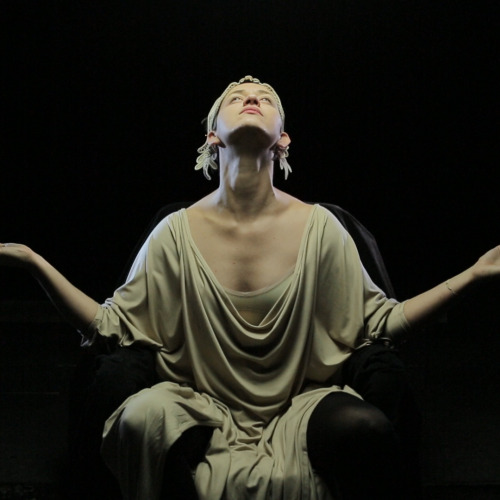Muses Breaking Out from the Museum
At the beginning, for Homer and Hesiod, the Muse was one: she gave words to the poet, he gave his voice to the chant. Then, with the development of polis, the Muse multiplied into nine pretty women who were presenting arts and sciences. They fluttered around Apollo, who was sometimes their father, sometimes their lover. And, eventually, their imaginary home became the Museum, an institution where artefacts – objects, documents, and images – are kept and where the Muses have ever since lived their symbolic lives. Silent, of course, especially in times of war.
This is a very short story of the Muses’ lives. With the formation of the City, the Administration, and the Male Power, Muses have been ever more symbolized. Why on Earth were they feminine? The reason is clear and brutal: women used to mean nothing in a male-ruled society; with no voting or citizens’ rights, they were a different tribe, close to slaves and foreigners. Relating the woman’s body to an abstract notion (arts and sciences) would send an immediate message: I am a woman, therefore I do not exist in real society, I am the society’s abstract component. As an abstract notion, I belong to anyone, and my availability is represented by the beauty of my body, covered skimpily with a thin and often wet-looking cloth, showing the best of my body. Everybody can watch me, desire me – voyeurism, sexual fantasy and wet dreams included –, without any responsibility at all. In a male-ruled society, it is good to respect arts and sciences, but no one is obliged to do anything except have dirty dreams about them.
Our world is still full of half-naked women representing the arts and sciences, justice, or even the state, watching upon us and being rarely watched as they are attached to tops of historic buildings. Think of the cemeteries, too, full of generally young and beautiful women, semi-nude and in attractive reclining positions, far from their dead originals: they are lingering on a risky and dangerous edge between symbolism and death – a space that women, down the history lane, have commanded better than men ...
What to do with Muses today, respecting their achievements and their long, undeserved sufferings? They have been the opposition to real women artists and scientists, they have been used to wipe them out and, thus, a Muse for each artist or intellectual was invented and put in the form of a real wife: usually a beautiful woman who rewrites, proofreads and corrects male authors’ texts (like Sophia Tolstoy who transcribed War and Peace ten times), washes his brushes and underpants, lives and bears children in horrible poverty, but poses for him, cooks for him, loves him, and inspires him through thick and thin, and her name is known in the measure of her sacrifice, or his immense generosity of mentioning it ... This Shadow Muse completes the Muse gallery, the imaginary Museum. It is time for all of them to break out from there.
Once out in the free, Muses can re-enact their history, take revenge, or burn Museums to the ground. But they can also think of reconquering the institution(s), especially the Museum itself. Everywhere, the Academies of today are predominantly male: the real arts and sciences are male to the core and happy with the symbolic Muses. There is no sense to even try to convince these shaky Methuselahs to “accept” women. Why, then, should women artists and scientists not reclaim their old home’s name and start Museums everywhere they like? Forgotten, unjustly rejected, dead, alive, young, and old women would have their own institutions for development, reflection, and creation – for themselves. For glory, immortality, expansion, and fun.
Dr. Svetlana Slapšak





